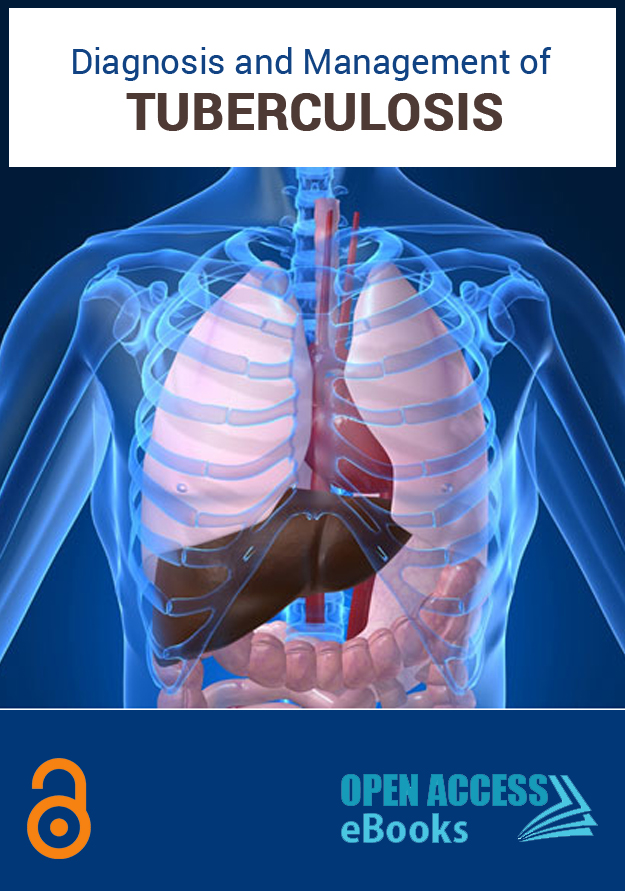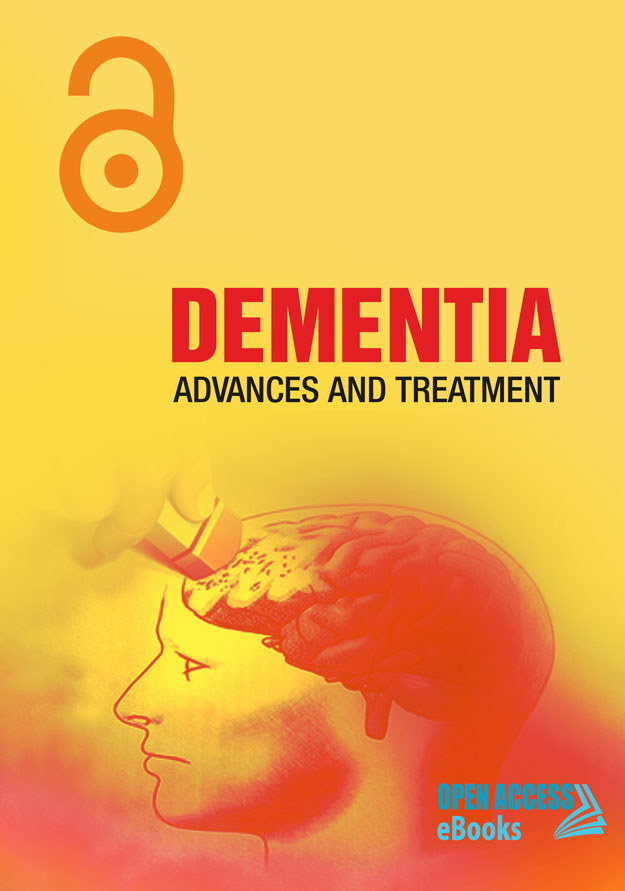Published Chapters:
Vaccination against Tuberculosis
eBook: Diagnosis and Management of Tuberculosis
Moving ahead of the World Health Organization Millennium Development goal targets for the tuberculosis (TB) set up till year 2015, the Sustainable Development Goals (SDGs) adopted by the United nations (UN) in 2015 has set one more goal i.e.point 3.3, as to eradicate the TB epidemic by the year 2030 [1]. Similarly,the World Health Assembly approved the WHO strategy to eradicate the TB in 2014 . The strategy aims for 95% reduction in TB deaths and 90% reduction in TB incidence rate by 2035 [2].As per the WHO reports, an estimated 10.4 million cases occurred in 2015 including the 1.2 million people living with HIV/AIDS (PLHA). There were 1.8 million deaths due to TB of which 0.4 million were PLHAs. An estimated 480,000 developed multi drug resistant TB (MDR-TB) and an additional 100,000 were rifampicin resistant TB amenable for the second line treatment in 2015 [2]
Treatment response of retreatment category tribal Pulmonary Tuberculosis patients lived in Eastern India
eBook: Diagnosis and Management of Tuberculosis
Objective: The study was conducted to assess the treatment outcome of different category retreatment cases with the aim of finding out the important predictors of unfavorable outcomes. Methodology: This hospital based prospectivecohort study was conducted in three Tuberculosis unit (TU) of west Midnapore (a district of eastern India), covering mostly the tribal populated areas. Patients who were registered for Category II anti-tuberculosis treatment between 1st quarter 2013 (Jan to Mar) to 4th quarter 2013 (Oct to Dec), were considered as our study cohort and they were followed upto December 2014. The study was started with 177 patients but ultimately ended with 165 patients. Results: Unfavorable outcome was observed among 24.8% patients. Among them mostly (51.2%) were defaulter, 22% were failure case and 26.8% patients died during treatment. Patients, who were minority by religion, were found 4 times more vulnerable for unfavorable outcome. Unfavorable outcome were found 7 times more common among retreatment TB cases who remain sputum positive after completion of initiation phase of category II treatment. Conclusion: Programmatic approach should be specified to address the minority by religion population and to reduce the load of sputum positive cases after completion of initiation phase treatment by tracking them.
ROS acts as a double-edged sword in the pathogenesis of Type 2 Diabetes Mellitus
eBook: Type 2 Diabetes
Although the clear mechanism of T2DM is still to be elucidated, it has been well established that reactive oxygen species (ROS) derived from multiple sources plays a causal role in multiple types of insulin resistance and contributes to β-celldysfunction thus enhances the development and progression of T2DM. What is incomprehensible is that the detrimental ROS also plays a substantial role in the normal insulin signal transduction and glucose-stimulated insulin secretion (GSIS) in β-cell, which forces us to re-recognize the role of ROS under physiological and pathological conditions in a more broad way. Redox homeostasis is tightly controlled by the transcriptional factor nuclear factor erythroid 2-related factor 2 (Nrf2), whose abnormality is believed to be related with diabetes. Accumulating evidences suggest that there are important cross-talks between Nrf2 and PPARγ, PGC1α, PI3K/Akt on regulating antioxidant enzymes and the development of diabetes. Therefore, these evidences indicate that Nrf2 may be a critical element in taking survival and death decisions when cells are exposed to an oxidant environment. In conclusion, enhancing GSIS and insulin sensitivity through the regulation of Nrf2 levels is a potential avenue for developing new therapeutics. Nrf2 may become a promising target for the treatment of T2DM.
Oral Agents for Type 2 Diabetes Mellitus
eBook: Type 2 Diabetes
Recent advances in the pathophysiology of Type 2 Diabetes have made tremendous progress in the development of new treatment modalities for Diabetes. These new treatment regimens have allowed clinicians to tailor fit medications according to their patients’ diabetes profile and phenotype. In my review publication on pharmacologic treatment options for Type 2 Diabetes published at the Mayo Clinic Proceedings in 1996, Tan et al emphasized that only three classes of oral medications were then available for our patients namely sulfonylureas, biguanides and alpha glucosidase inhibitors [1]. Twenty years later, significant changes in the understanding of diabetes have resulted in newer and safer medications for our patients. The Ominous Octet physiology of Diabetes [2] have advanced our way of treating diabetics with monotherapy to early combination therapy using different agents acting on different mechanisms.
Urinary tract infections & treatment
eBook: Urinary Tract Infections & Treatment
This chapter focuses on the urinary tract infections (UTI) which is caused due to the invasion of microorganisms into the urinary tract, mostly by bacterial species. It is one of the most commonly occurring disease in human worldwide, next to the common cold and flu and it predominantly affects women as compared to men. In this chapter, we discussed about the UTI pathogenesis, various natural compounds and antibiotics used for treating this infection. UTI starts with the invasion of uropathogens into the urinary tract; followed by the evasion from the immune system, thereby it colonizes and gets multiplied. The bacterial toxins produced by uropathogens mediate the lysis of host epithelial cells and favors the bacteraemia. It can transfer from one individual to other via direct contact. In UTI, the host factors such as menopause, plays a major role where in post-menopaused women, the decolonization of lactobacillus species facilitates the colonization of E.coli. The diagnostic method for UTI varies from conventional method to advanced diagnostic tools such as from urine culture (microbiological plate culture) to MRI and Pyelogram. Certain phytocompounds from plants have some bactericidal properties and they are used for the treatment of UTI. This overview of UTI gives us a better knowledge to focus and therapeutic aspects towards the remedial measures.
Recurrent urinary tract infections and management
eBook: Urinary Tract Infections & Treatment
Urinary tract infection(UTI) is a condition in which one or more parts of the urinary system (the kidneys, ureters, bladder, and urethra) become infected. UTIs are the most common of all bacterial infections and can occur at any time in the life of an individual. Nearly 95% of cases of UTIs are caused by bacteria that typically multiply at the opening of the urethra and travel up to the bladder. Much less often, bacteria spread to the kidney from the bloodstream.Normally, the urinary tract is sterile, but urinary tract infections can be caused by a variety of conditions They can cause complicated or uncomplicated, symptomatic or asymptomatic infections. Anatomically can be divided into upper and lower tract infections.
5-Alpha reductase inhibitors in the management of benign prostatic hyperplasia : A rationale
eBook: Urinary Tract Infections & Treatment
Benign Prostatic hyperplasia and its clinical manifestation as lower urinary tract symptoms is a major health concern for aging men. Prevalence increases with age, affecting about 60% of men aged over 50 years, and 80% by the age of 80 years. Nearly all men will develop microscopic BPH by the age of 90 [1]. Despite the high prevalence of BPH in aged men population, the disease pathogenesis is far from complete understanding. It is the non-malignant enlargement of the prostate gland caused by increase in the number of stromal and epithelial cells, resulting in obstruction of the proximal urethra, thus causes urinary flow disturbances. Although many men with mild to moderate symptoms do well without therapy, others have gradually increasing symptoms and require medical therapy or surgery. BPH is a rarely fatal but if left untreated, chronic obstructions can lead to the back up of urine into the ureters and compromises kidney function, thus serious life threatening complications such as acute urinary retention may arises [2].
Age-associated Arterial Remodelling and Cardiovascular Diseases
eBook: Abnormalities of - Vascular System
Arterial remodelling is a major risk factor for a variety of age-related diseases and represents a potential target for therapeutic development. During ageing, the structural, mechanical and functional changes of arteriespredispose individuals to the development of diseases related to vascular abnormalities in vital organs such as the brain, heart, eye and kidney. For example, aortic stiffness increases nonlinearly with advancing age – a few percent prior to 50 years of age but over 70% after 70 years of age. The elevated stiffness in large elastic arteries leads to increased transmission of high pressure to downstream smaller blood vessels, in turn affecting the microcirculation and end-organ functions. Meanwhile, the augmented remodelling of small arteries accelerates central arterial stiffening. This chapter is to provide an overview of age-associated changes in the arterial wall and their contributions to both central and peripheral vascular abnormalities associated with ageing. Therapeutics that specially target the different aspects of arterial remodelling are expected to be more effective than the traditional medications, particularly for the treatment and management of vascular ageing-related diseases.


